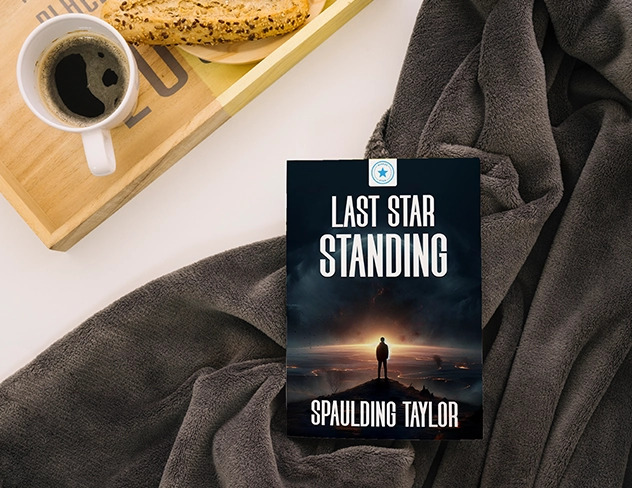For a long time, book cover designs were considered one of the most valuable marketing assets in the print publishing world. With the emergence of e-books and audiobooks, the publishing industry has undergone significant changes. However, print publishing remains a key player in the sector.
With the rise of digital books, print books still hold a special place in the publishing world, and covers are a crucial feature of their success. A book with a beautiful cover will attract people who browse through it, giving them a hint of what they will read and the tone of the book. In this blog, we will discuss the things that make a cover attractive and the steps to designing an eye-catching cover.
Bring Your Ideas to Life and Boost Your Book Sales

A book cover is not just an image.
It is a combination of strategy, emotion, and psychology that is merged into a single entity. Every choice you make, from typography to texture, must align with your story’s soul. Let’s design our next book cover step by step, one that is creative and stands out.
-
Understand Your Target Audience
Just like a bookshop branding Ireland, you need to know the target audience. The success behind a cover is understanding the audience you are designing for. Your readers’ preferences, age group, and interests shape the visual language of your book. Before you finalize a design and begin planning, follow some of these tips.
- Examine all the popular covers of your genre. Observe the everyday things in each of them. These are those trends that tend to gravitate your audience towards the book.
- Figure out that romance readers love soft tones and elegant fonts, while thriller fans look for darker contrasts with bold titles.
- Design some samples and ask for feedback from reader groups.
| Genre | Popular Cover Style | Color Trend | Font Type |
| Romance | Minimal & soft | Pastel pinks | Script fonts |
| Thriller | Dark & intense | Black, red | Sans-serif bold |
| Fantasy | Illustrated | Deep blues, gold | Serif & decorative |
| Non-fiction | Clean & factual | White, grey, blue | Sans-serif modern |
-
Focus On The Typography And Readability
Typography is not just about selecting a visually appealing font. You are indirectly communicating with your readers. An avid reader will be able to recognize and easily read your title, even from the thumbnail image.
- Clarity must be your priority. The title should be readable even when it is reduced to a smaller size for the e-books.
- Match the tone through the typography. For instance, an elegant typeface is best suited for romance, while a sharp and clean one works well for thrillers.
- Choose a size that the title is the first thing readers will notice, followed by the name of the author.
-
Select Some Designs That Reflect Your Story
Your book cover serves as a visual summary of your work. It must whisper the essence of the book at first glance. The concept you choose must mirror the tone and message of your story.
- No matter if your book’s theme is mystery, love, or self-defense, the design must reflect it.
- Research and look for a single object that can represent the entire narrative when used creatively. For instance, a bird with wings will definitely highlight that the story is about something related to reaching the highest point in the sky.
- Avoid replicating the overused visual elements that can make your cover look generic.
-
Experiment With The Color Psychology
Colors shape the perception faster than words can. Choosing the right color palette evokes emotions, suggests a genre, and helps drive sales. Just like services such as logo design Ireland, they keep color psychology in mind when designing a logo for a company.
- Adding warm colors like red, orange, or yellow highlights themes like passion, danger, or adventure.
- To promote calmness, mystery, and trust, opt for cool tones like blue, green, and purple.
- Choosing neutral shades like white, black, and greys conveys professionalism or a minimalist aesthetic.
-
Use Imagery That Narrates Stories

A powerful image will communicate more than a thousand words. Whether you choose illustrations, photographs, or abstract imagery, the chosen imagery must reflect the heart of the narration.
- Use custom illustrations or stock photos that have been edited to fit your story’s unique identity.
- Avoid adding too many elements to a single page. One focal image will work best.
- Ensure that your imagery does not overpower your title or author name.
-
Maintain Balance And Layout Harmony
A stunning cover is all about the proportion. Everything, from the font size to the spacing, needs to be showcased as a unified unit. Balance ensures that your design does not look chaotic or empty.
- Align your elements neatly to maintain consistency.
- Empty spaces enhance the elegance and keep the cover visually comfortable.
- Position your major elements in a way that the eye naturally rolls from title to imagery.
-
Keep Designing For All The Formats

Remember, the book is no longer just for printing. It needs to shine on digital platforms as well. The design must be adaptable, so choose something that maintains its charm across various screen sizes and mediums.
- Check the design in all formats and ensure that the title and design remain visible in all previews.
- All the sides should connect visually and narratively.
- Avoid pixelated or blurry visuals when resized.
-
Collect Professional Feedback
Even the most creative designers and those with years of experience need another perspective. External feedback helps spot the weak areas that you might have overlooked.
- Consult a professional and ask him to highlight technical or compositional flaws.
- You can also ask for honest reviews from people within your target audience.
- You can present two to three versions and analyze which one will resonate the most.
FAQs
- What is the importance of a good book cover?
A good cover will help grab the reader’s attention, convey the genre of your book before they even start reading, and make them curious enough to give it a try.
- Which are the most popular ones in the industry?
Some of the common ones include the minimalist and bold typography. These are trendy as they are clean and modern.
- Can authors design their cover?
It is easy to design your book cover using digital applications. However, the professionals will help to bring a polished look.
The Book Cover Is an Invitation to the Story
Your book cover is your story’s handshake with the world. One of the silent promises of the experience waiting inside. A design that truly stands out is not about trends but about truth. It visually translates your book’s essence and stirs curiosity in the reader’s heart.
Remember, simplicity paired with creativity always wins. Whether you hire a professional or design it yourself, ensure that your cover reflects the identity of your story. Because in a sea of titles, the ones that stand tall are those whose covers speak before their words do.








Leave a Reply